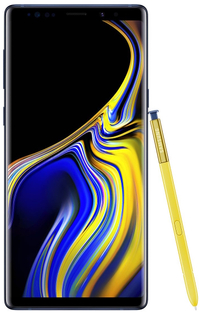iPhone XS Max vs Galaxy Note 9: Which Big-Screen Phone Wins?
Apple has entered the mega phablet arena with the iPhone XS Max. Here’s how it stacks up against Samsung’s best.
They are two of the biggest phones ever -- with prices to match. The 6.5-inch iPhone XS Max ($1,099) is ready to battle the 6.4-inch Galaxy Note 9 ($999). Both phones boast serious power, highly advanced cameras and gorgeous and ginormous OLED screens. But these flagships are quite different in several ways, especially their storage options, processors and special features.
Editor's Note 11/11/2018: The holiday season is here. Make sure to check out our guide to the best iPhone XS and XS Max deals of the season.
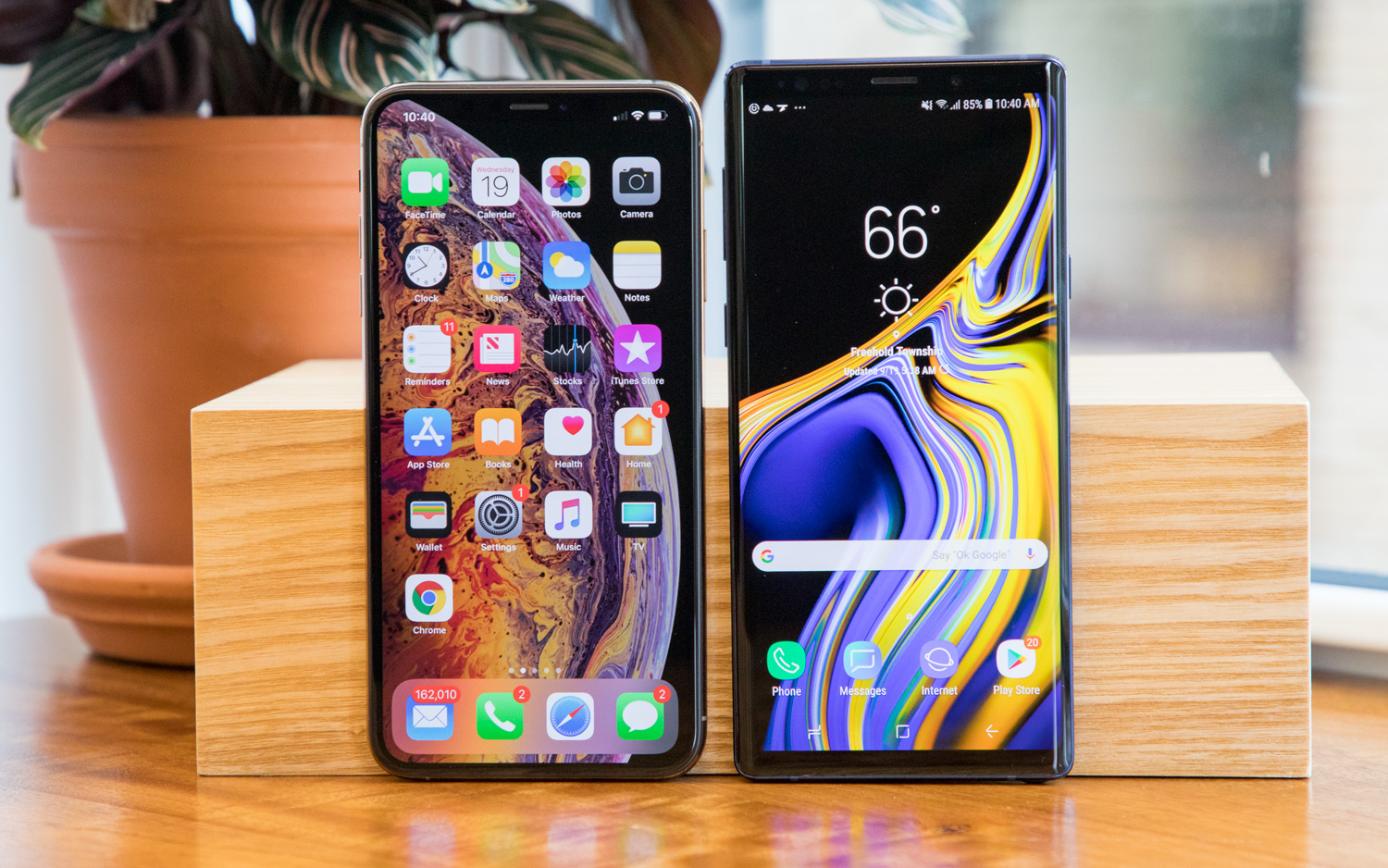
We put both the iPhone XS Max and Note 9 through several rounds of competition to declare a winner.
Update Oct. 5: We have updated this comparison with iinfo about a charging issue affecting some iPhone XS and XS Max units.
iPhone Xs Max vs Galaxy Note 9: Specs Compared
| Row 0 - Cell 0 | iPhone XS Max | Galaxy Note 9 |
| Starting Price | $1099(64GB), $1,249(256GB), $1,449(512GB) | $999(128GB), $1,249(512GB) |
| Processor | A12 Bionic | Snapdragon 845 |
| Screen | 6.5-inch OLED (2688 x 1242 pixels) | 6.4 inches Super AMOLED (2960 x 1440 pixels) |
| Storage | 64GB, 256GB, 512GB | 128GB, 512GB |
| microSD | None | Up to 512GB |
| Biometric security | Face ID | Face scan, Iris scan, fingerprint |
| Rear Camera | Dual 12-MP (f/1.8) and telephoto (f/2.4) | Dual 12-MP (f/1.5) and (f/2.4) |
| Front Camera | 7 MP (f/2.2) | 8 MP (f/1.7) |
| Battery Size | 3,179 mAh (rumored) | 4,000 mAh |
| Battery Life (Hrs:Mins) | 10:38 | 11:26 |
| Water resistance | IP68 | IP68 |
| Colors | Gold, Silver, Space Gray | Lavender Purple, Ocean Blue |
| Size | 6.2 x 3.05 x 0.3 inches | 6.3 x 3 x 0.34 inches |
| Weight | 7.3 ounces | 7.1 ounces |
On the surface, the iPhone XS Max is really just a bigger version of the iPhone X. It weighs in at a hefy 7.3 ounces, compared to 7.1 ounces for the Galaxy Note 9. Still, the iPhone XS Max is slightly thinner at 0.3 inches versus 0.34 inches for the Note.
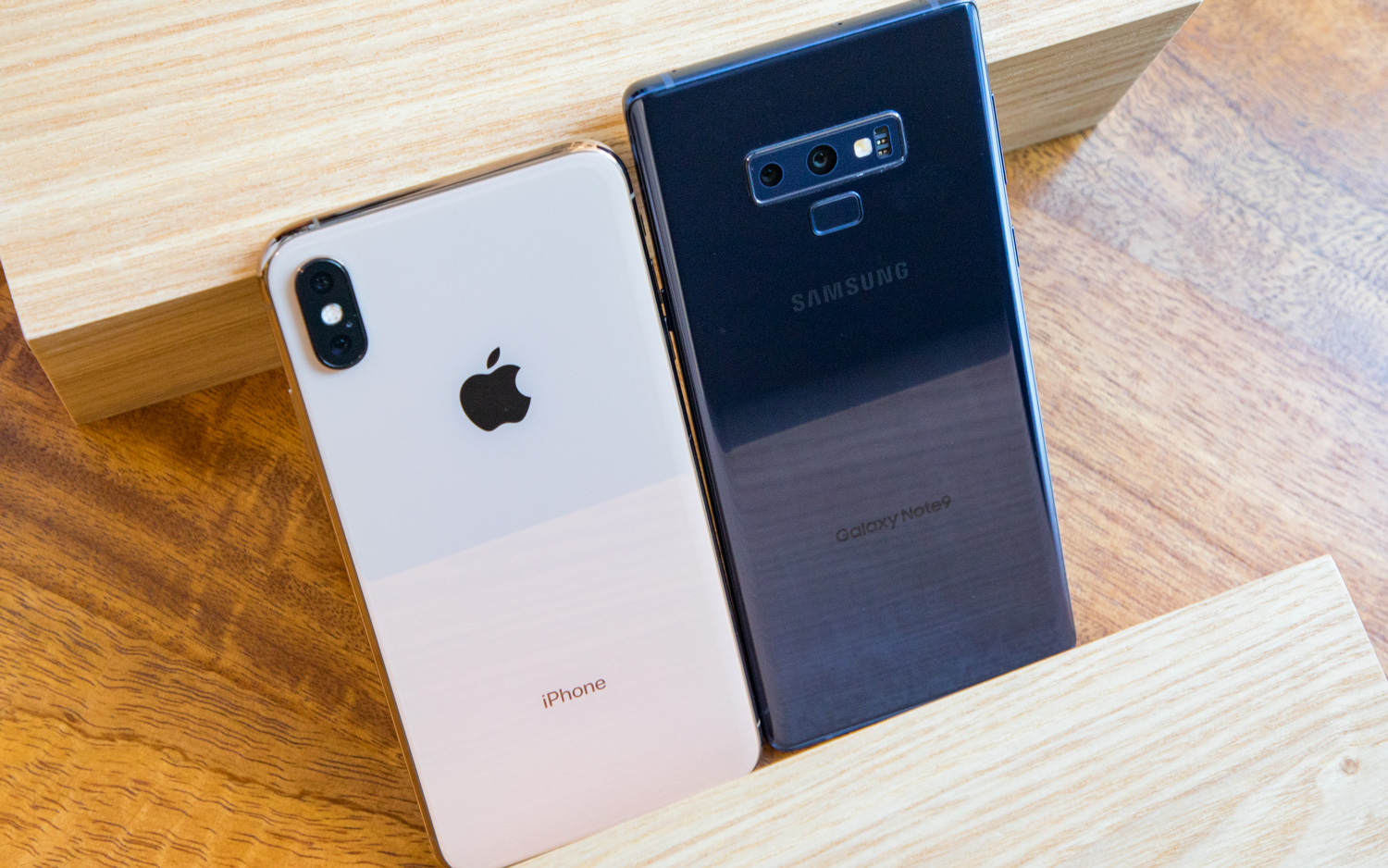
Both phones are IP68 rated, which means they can withstand being in 2 meters of water for up to 30 minutes. Note that only the Note 9 has a headphone jack.
What’s new on the iPhone XS Max is a reformulated glass front and back that Apple says is the most durable ever on a smartphone. (We haven't tested that yet, but videos of the iPhone XS being drop-tested suggest Apple's new phones are pretty durable.) There’s also a new gold color option, which looks pretty elegant with its color-matched stainless steel edge.
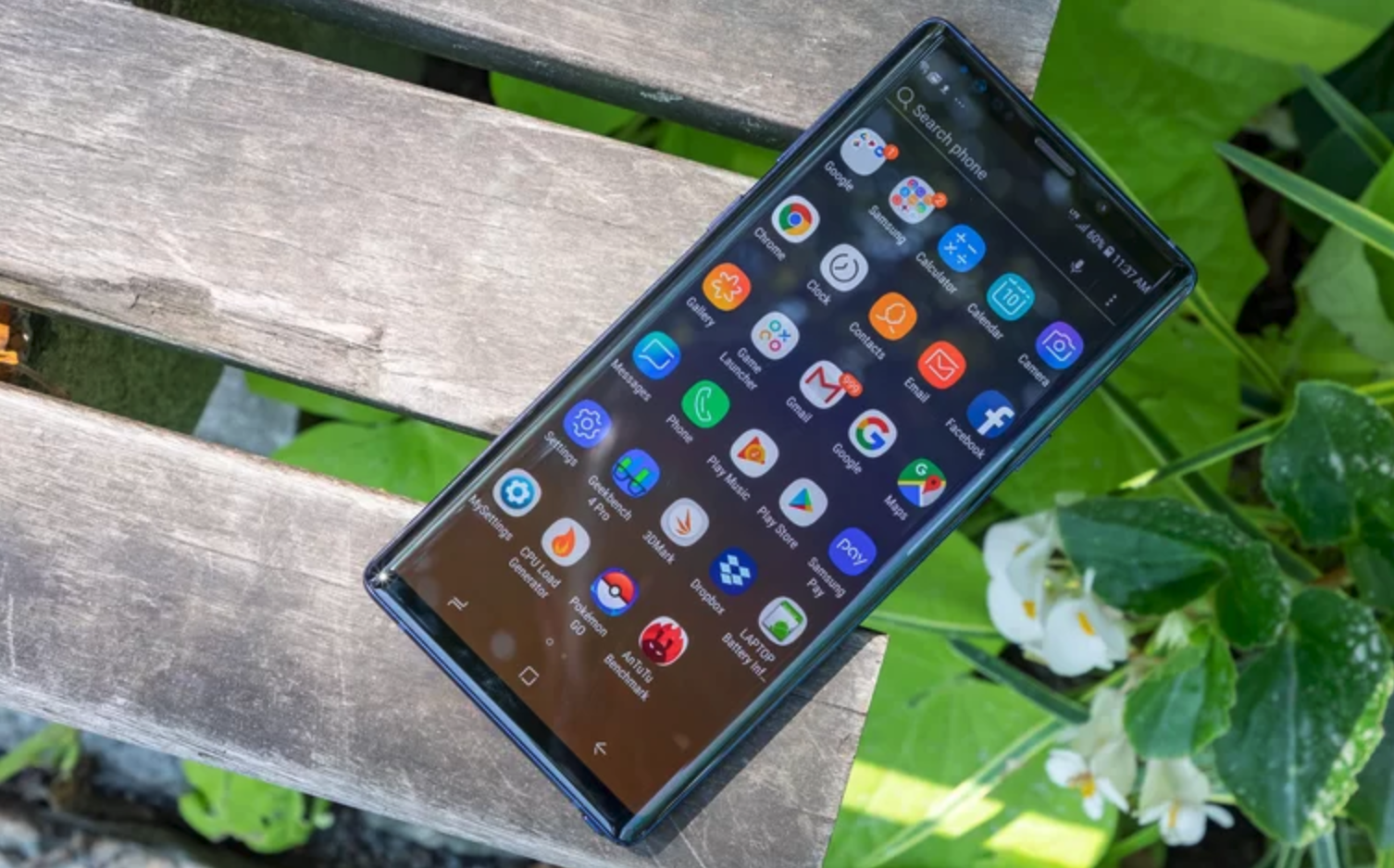
If you’re not a fan of notches, the Galaxy Note 9 will satisfy with its Infinity Display. The overall look is similar to the Note 8, but the back is less curved than before and it has diamond-cut aluminum around the sides. Still, having a fingerprint sensor on the back on the Note 9 is a bit of an eyesore compared to the iPhone XS Max’s cleaner aesthetic.
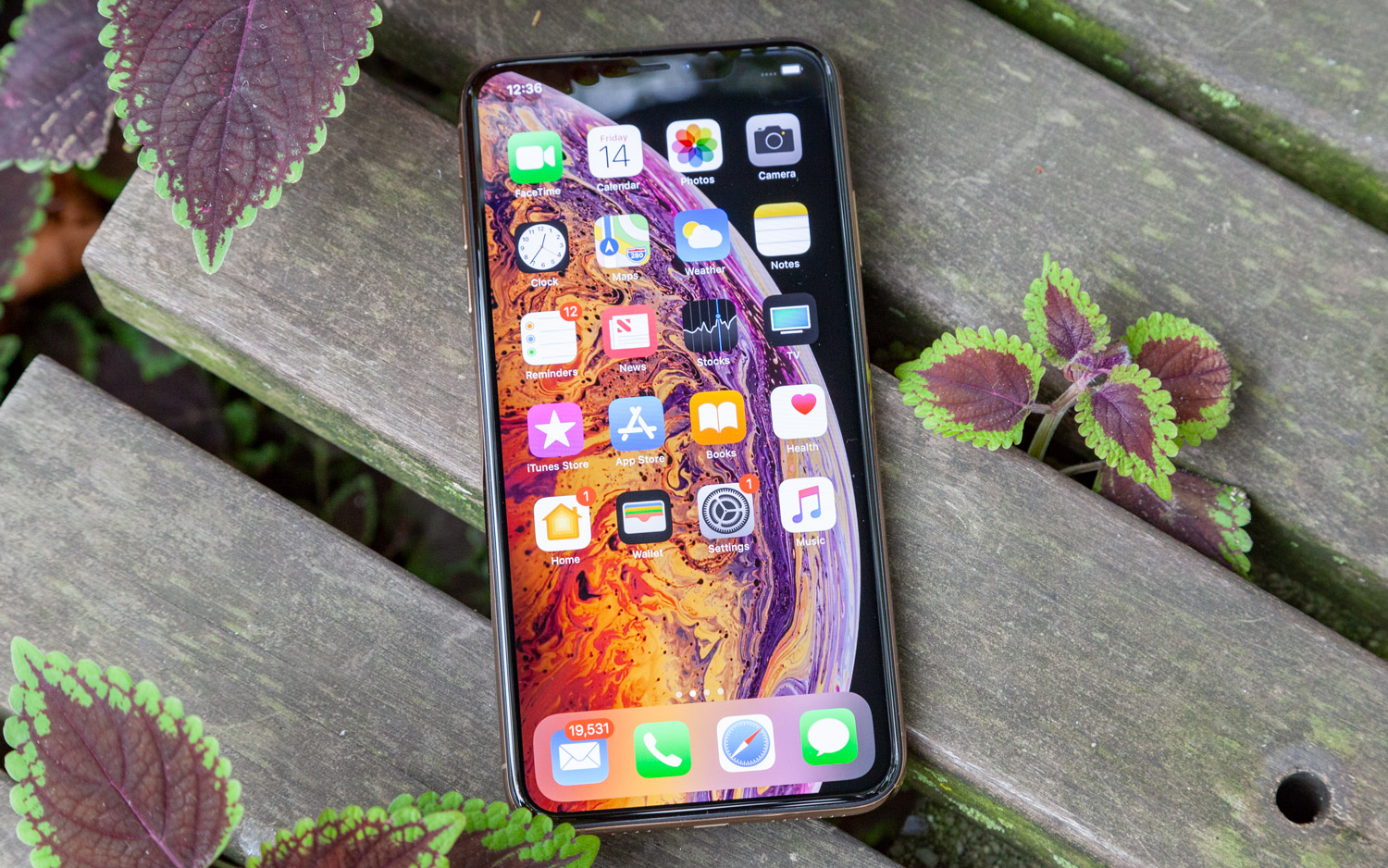
The Note 9 does have more eye-catching color options, with your choice of Lavender Purple and Ocean Blue, but it somehow looks and feels less premium than Apple’s flagship.
Winner: iPhone XS Max
Display
It’s not much of a difference, but the iPhone XS Max does sport a slightly bigger OLED display at 6.5 inches, compared to 6.4 inches for the Note 9. But the panel on Samsung’s phone has a higher resolution of 2960 x 1440 pixels, compared to 2688 x 1242 pixels for the iPhone XS Max.
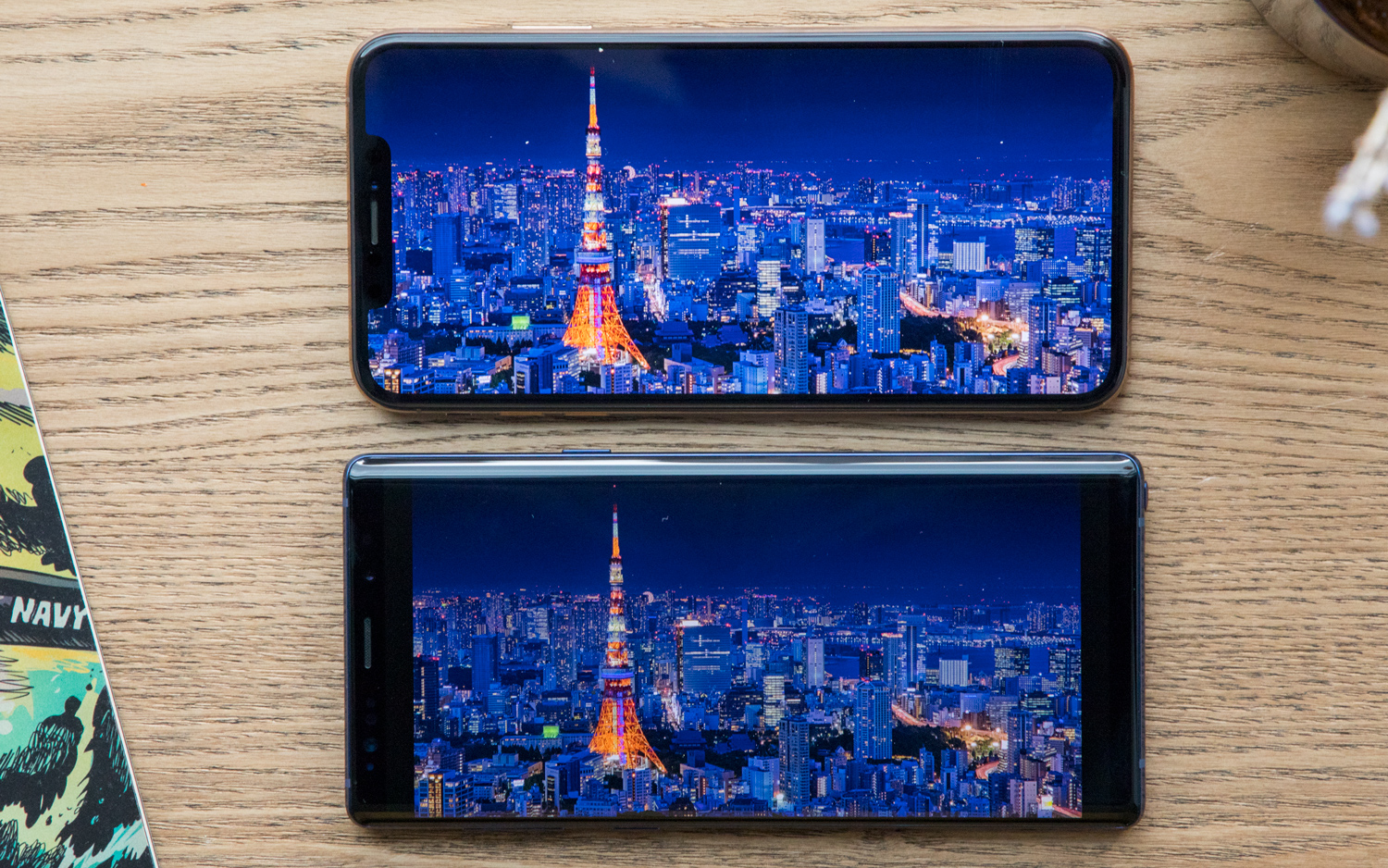
The Note 9 delivered an impressive 224 percent of the sRGB color gamut in our lab tests. And the color accuracy was just as impressive, as it achieved a Delta-E score of 0.34. (0 is perfect.) The iPhone XS Max wasn't as colorful, covering 123 percent of the sRGB color gamut, though a Delta-E score of 0.22 means the XS Max renders those colors more accurately.
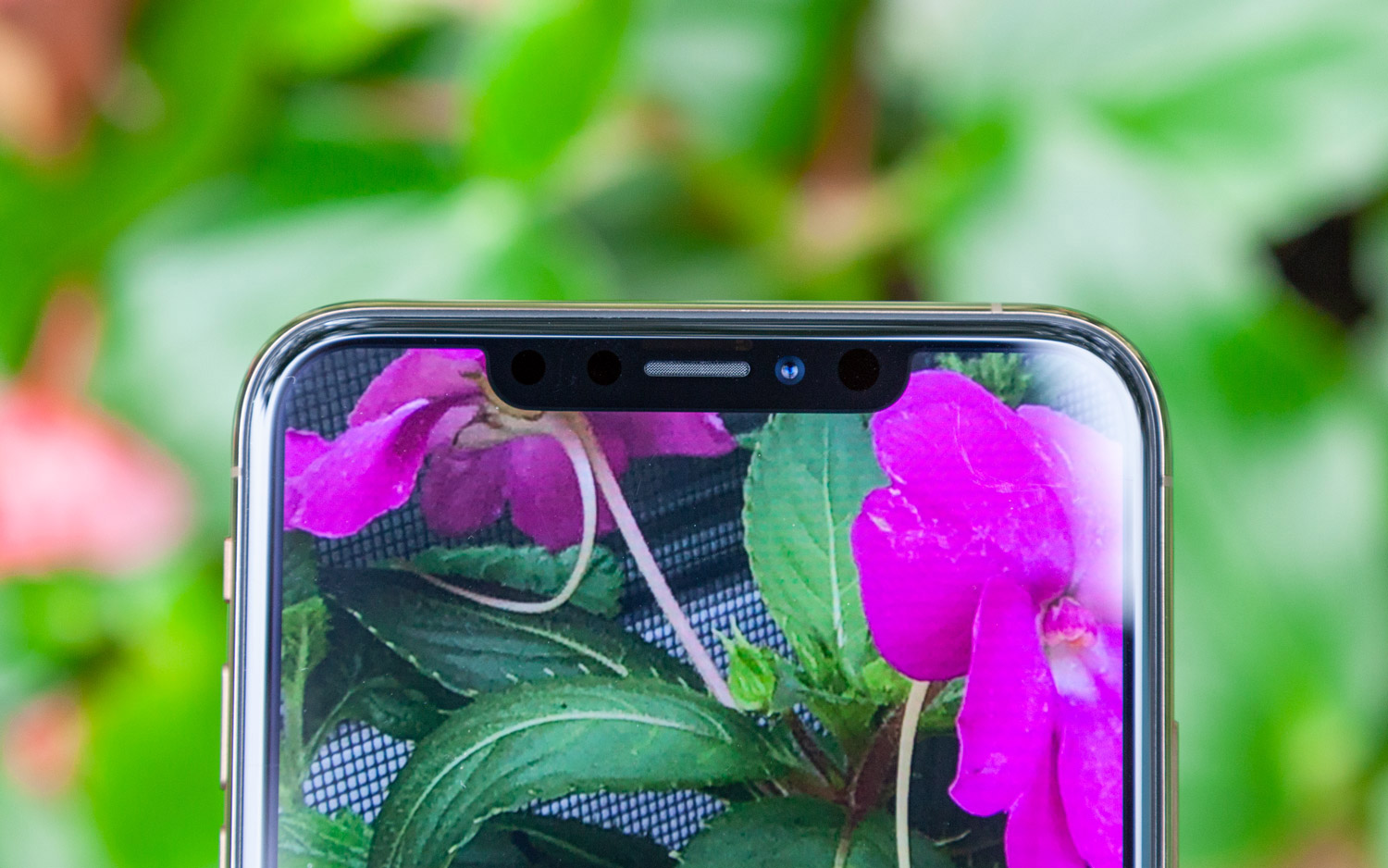
The screens are equally as bright — the Note 9 hit 606 nits on a light meter while the iPhone XS Max reached 604 nits. Just keep in mind that you can hit that peak brightness manually on the iPhone XS Max using Control Center; with the Note 9 you’ll have to be outdoors in direct sunlight for that max level to kick in.
We put the iPhone XS Max and Note 9 side by side and had a few colleagues pick which display they liked best. In one cityscape photo, the orange light beneath the Tokyo Tower looked more vibrant on the Note 9, and the Note 9’s panel delivered better contrast in other images. However, the iPhone XS Max’s display presents a brighter image at its max setting indoors.
MORE: iPhone XS vs. iPhone X: What's Changed?
The Note 9 does give you more control over the display, supplying four modes (Adaptive Display, AMOLED Cinema, AMOLED Photo, Basic) so you can customize the picture to your liking.
Winner: iPhone XS Max
Performance
This one is pretty easy to call, especially now that we've run the iPhone XS Max through our battery of benchmarks and real-life speed tests. The A11 Bionic processor in the iPhone X was already the fastest chip in a phone, and the 7-nanometer A12 Bionic has widened Apple’s lead over Snapdragon 845.
On the Geekbench 4 general performance test, the iPhone XS Max scored 11,515 — a much better result than the Note 9's 8,876 score. Apple's phone continues to outpace the Note 9 in our real-world test where we transcode a 2-minute 4K video to 1080p.
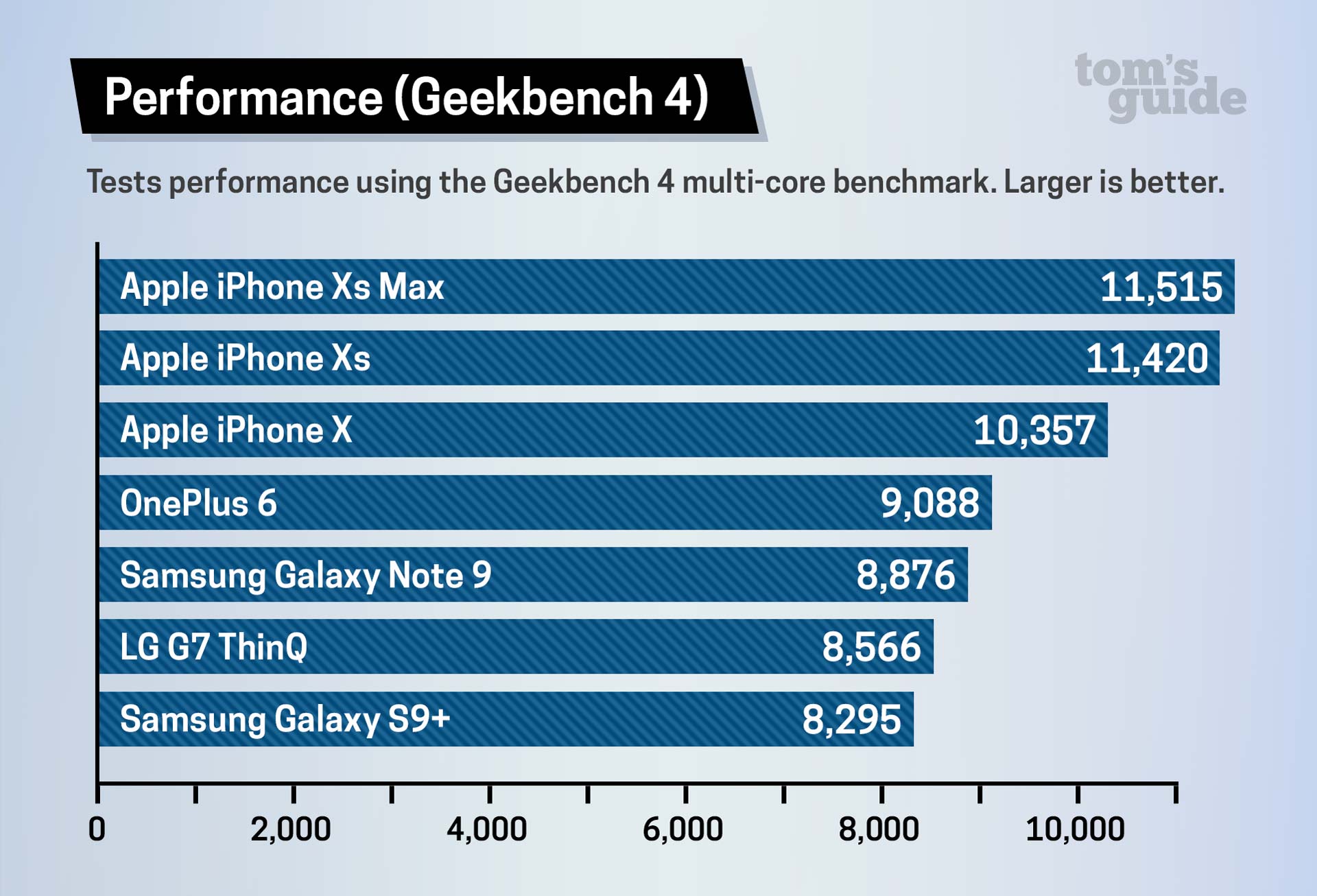
The XS Max also topped the Note 9 when it came to opening apps quickly — anywhere from around 3 seconds faster on Pokémon Go to nearly 15 seconds faster on Fortnite.
About the only test where the Note 9 turned in a better score than the iPhone XS Max was on the 3DMark Slingshot Extreme graphics benchmark. Here, the Note 9 scored 4,639 to the iPhone XS Max's 4,339.
MORE: Best Smartphones on the Market Now
But the iPhone XS surged past the Note 9 on another graphics test called GFXBench, which closely resembles real-world gameplay. The iPhone XS notched 1,604.7 frames on the Aztec Ruins portion of the test, and 1,744.44 frames in the Car Chase test. The Note 9 fared worse at 851.7 and 1,103 frames, respectively.
The bottom line? With the A12 processor, the XS Max is the fastest phone currently available.
Winner: iPhone XS Max
Cameras
Apple had some ground to make up here with Samsung, but based on our most recent camera face-off between the iPhone XS and Note 9, Apple has delivered a better camera phone.
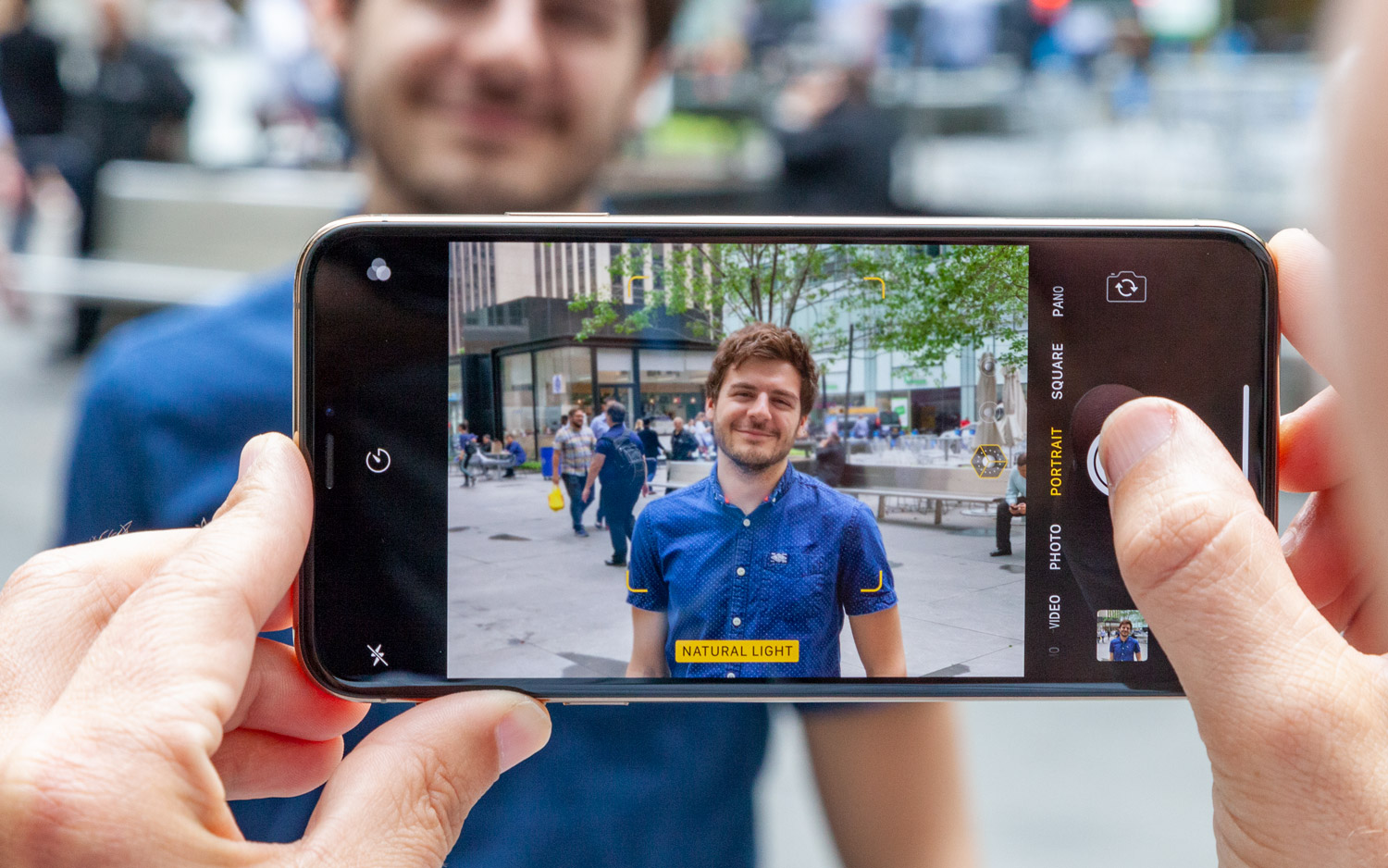
The iPhone XS Max’s camera benefits from a new sensor with larger pixels that offers a greater depth of color, which should result in up to 50 percent more light gathering capability. The auto focus promises to be twice as fast, and there’s Smart HDR for delivering better highlights in the shadows.
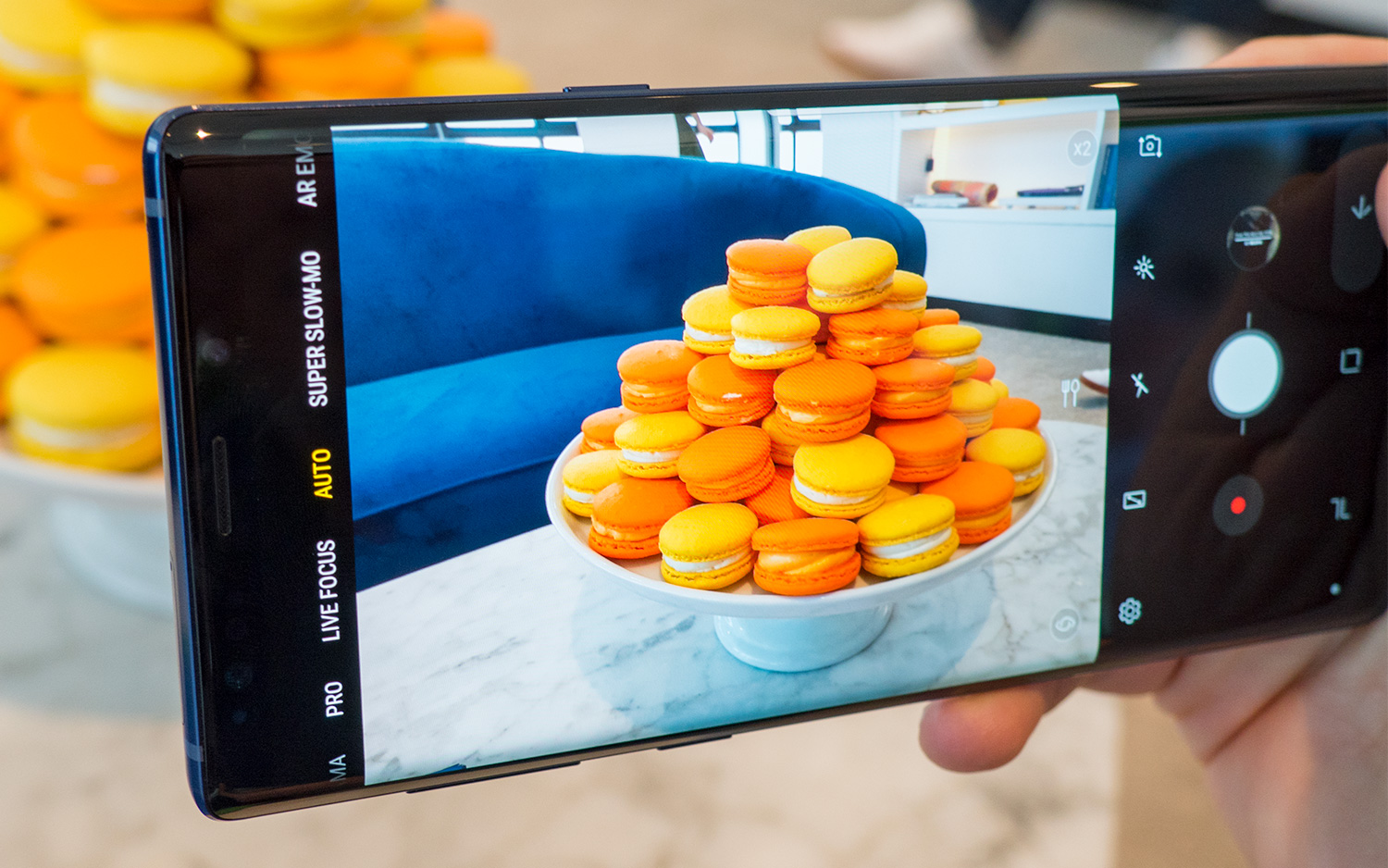
In this side-by-side shot between the iPhone XS and Note 9 taken at Bryant Park, the iPhone delivered more detail in the shadows and an overall warmer photo. The Note 9’s image looks blown out by comparison in certain areas.
The iPhone XS also delivered a better-looking Portrait shot than the Note 9. Our colleague Caitlin’s skin looks unnaturally pale on the Note 9, and one person is in the background isn’t blurred out on the Samsung photo that should be.
The Note 9’s camera is still very formidable. Not only do you get a wider aperture at f/1.5 (versus f/1.8 for the iPhone XS Max), but the Note 9 offers a dual aperture feature that automatically switches to f/2.4 to deliver better results in brighter conditions.
In this photo of a church, the iPhone XS’ shot has a little more detail, but the Note 9 wins because it does a better job illuminating the scene.
Winner: iPhone XS Max
Special Features
The Note 9 has several compelling features, starting with its improved S Pen. You can use the stylus to take notes and draw, but you can also use it as a remote control for the phone, because it now has built-in Bluetooth connectivity. For example, you can snap a selfie with the push of a button on the pen, or you could change music tracks.
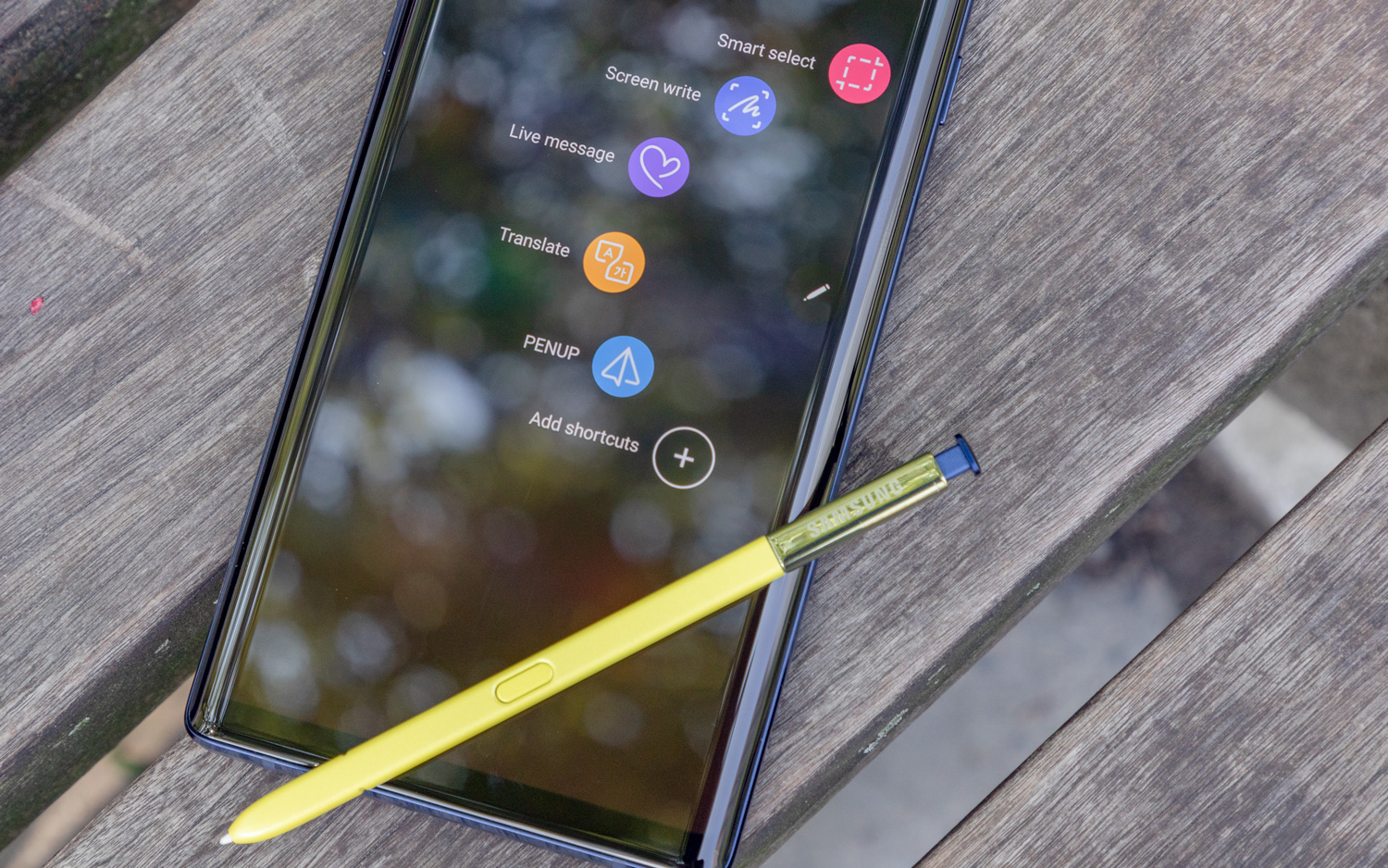
While the iPhone XS Max offers a dual-pane view within certain apps, like Mail and Calendar, only the Note 9 lets you run two separate apps side by side.
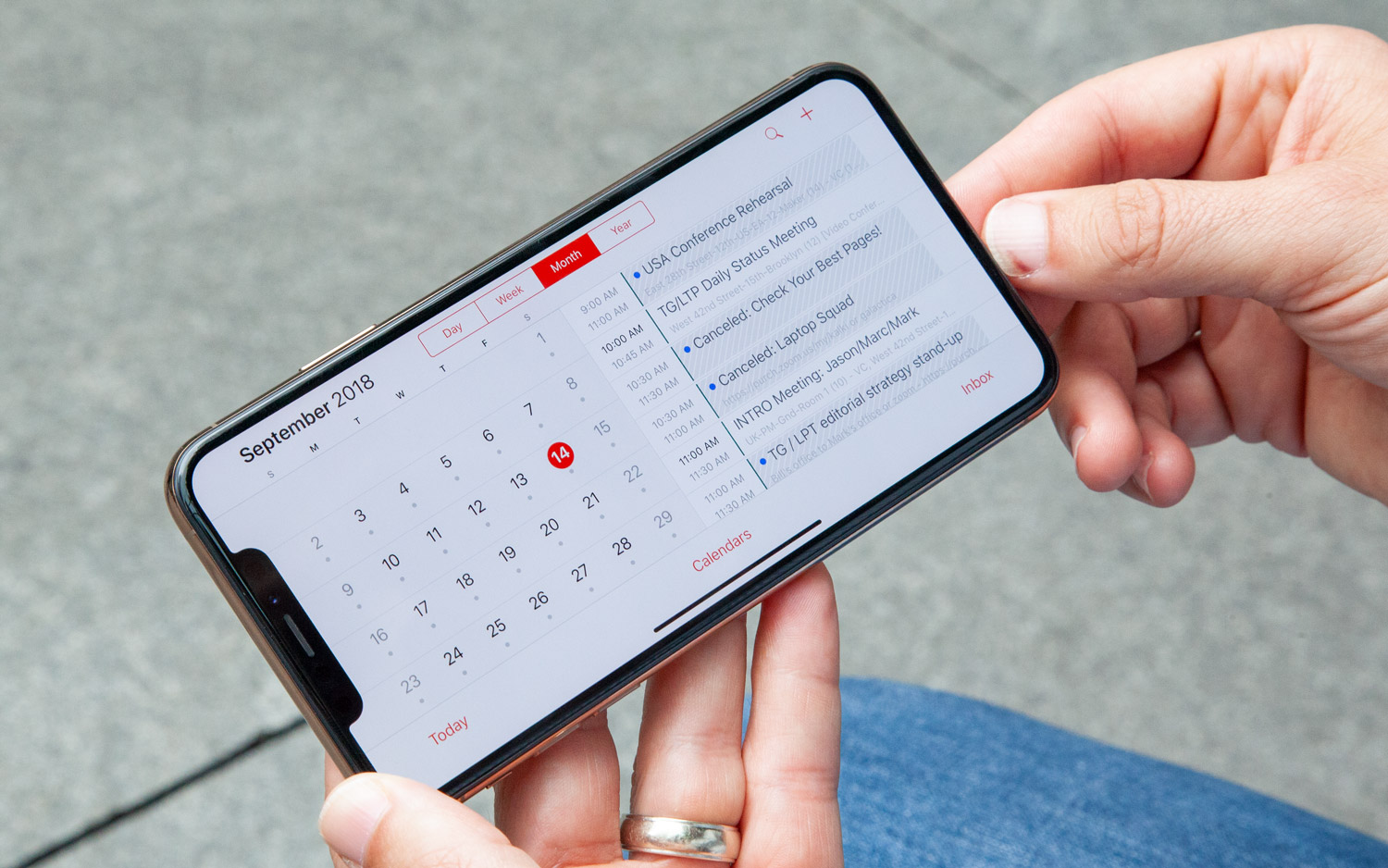
Another key Note 9 highlight is Samsung DeX, which allows you to use the Note 9 as a mini PC when you plug it into a larger monitor. All you need is a USB-C to HDMI adapter and a cable to get started; you no longer need a pricey dock. Plus, only the Note 9 has expandable storage via a microSD cards slot
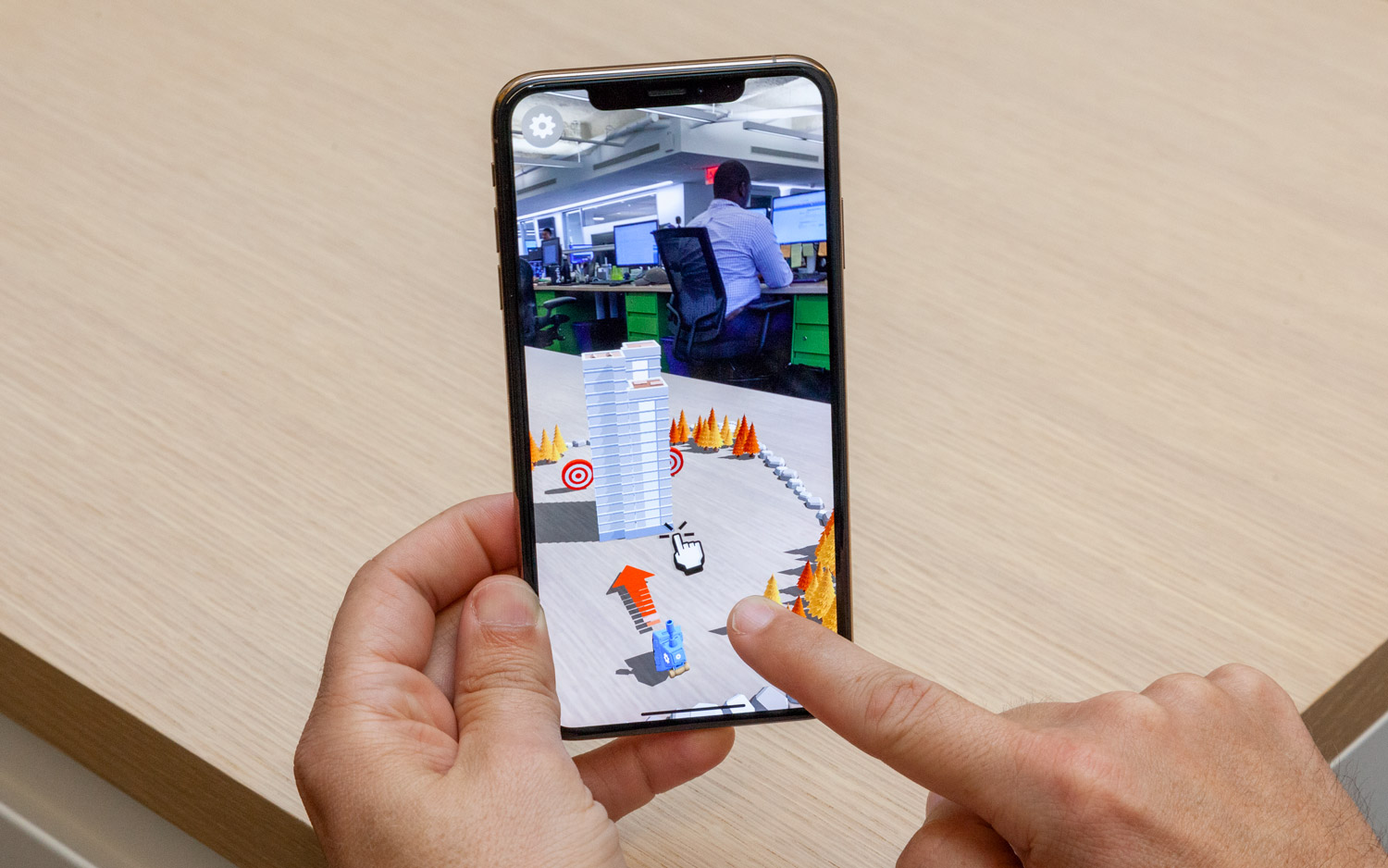
In addition to Face ID, Apple’s True Depth camera makes Animoji happen and Memoji, mapping your expressions to several animated avatars or a personal one you create, respectively. The similar AR Emoji feature on the Note 9 doesn’t look very natural.
Handy for travelers or anyone who wants to use two separate phone numbers, the iPhone XS Max now offers dual-SIM capability.
Winner: Galaxy Note 9
Security
The iPhone XS Max offers a front True Depth camera that enables Face ID, so you can unlock your phone with ease. This is faster on the XS Max than on the original iPhone X. The Note 9 does face unlock, too, but it’s not as secure as Face ID — you can’t use Samsung’s feature to verify mobile payments, for example — and Samsung’s iris scanning can be hit or miss. You can always use the fingerprint scanner on the Note 9’s back, though.
Winner: iPhone XS Max
Battery Life and Charging
The Note 9 packs a whopping 4,000 mAh battery, which is one of the biggest you’ll find in a phone. The handset lasted an impressive 11 hours and 16 minutes on the Tom’s Guide Battery Test, which involves continuous web surfing over LTE at 150 nits of screen brightness. (For context, the average smartphone dies after 9 hours, 48 minutes.)
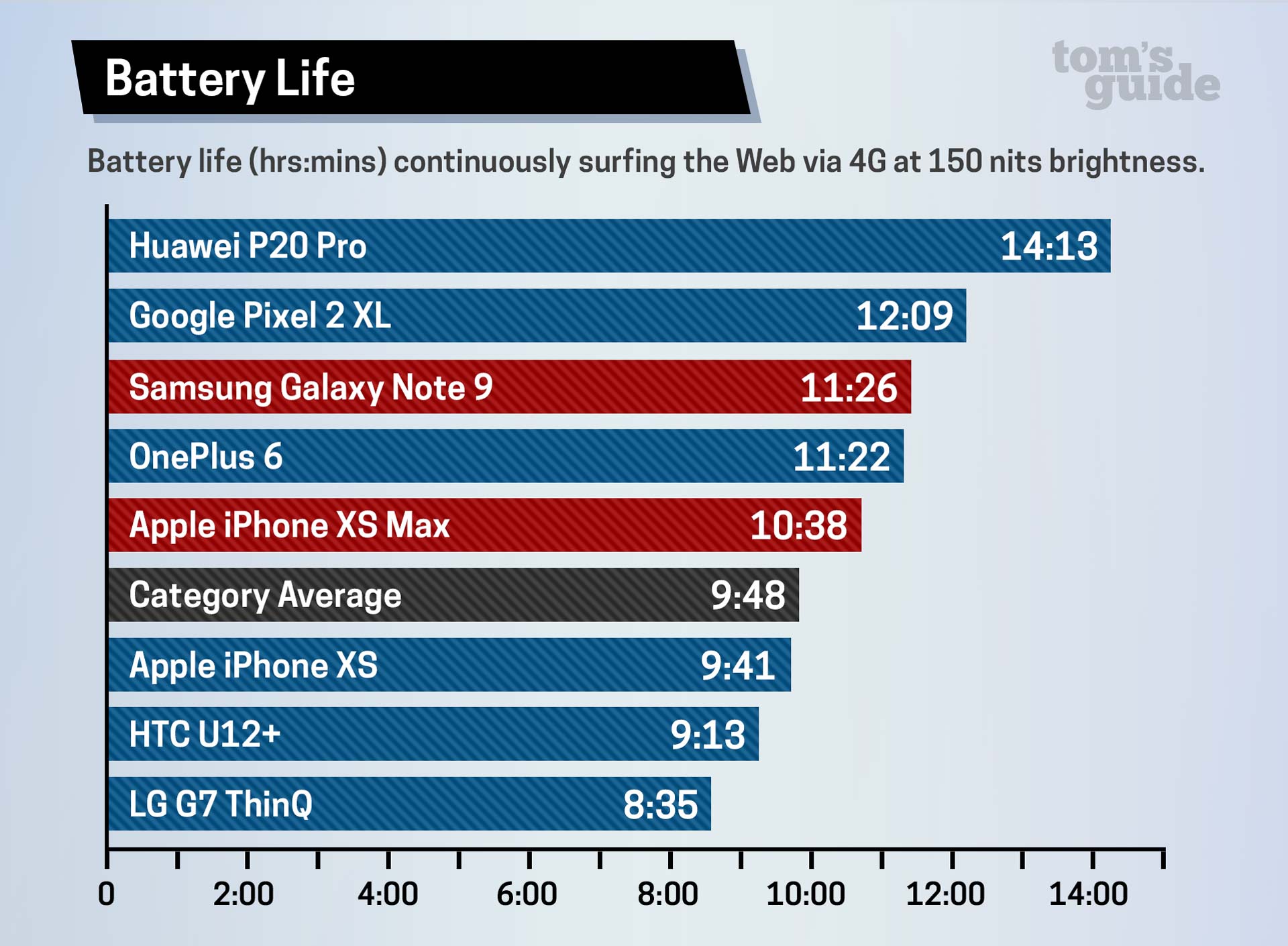
After tearing down the new Apple phone, iFixit says the XS Max runs on a 3,179 mAh battery. The XS Max finished behind the Note 9 with a runtime of 10:38. That’s above the smartphone average but not good enough to beat Samsung.
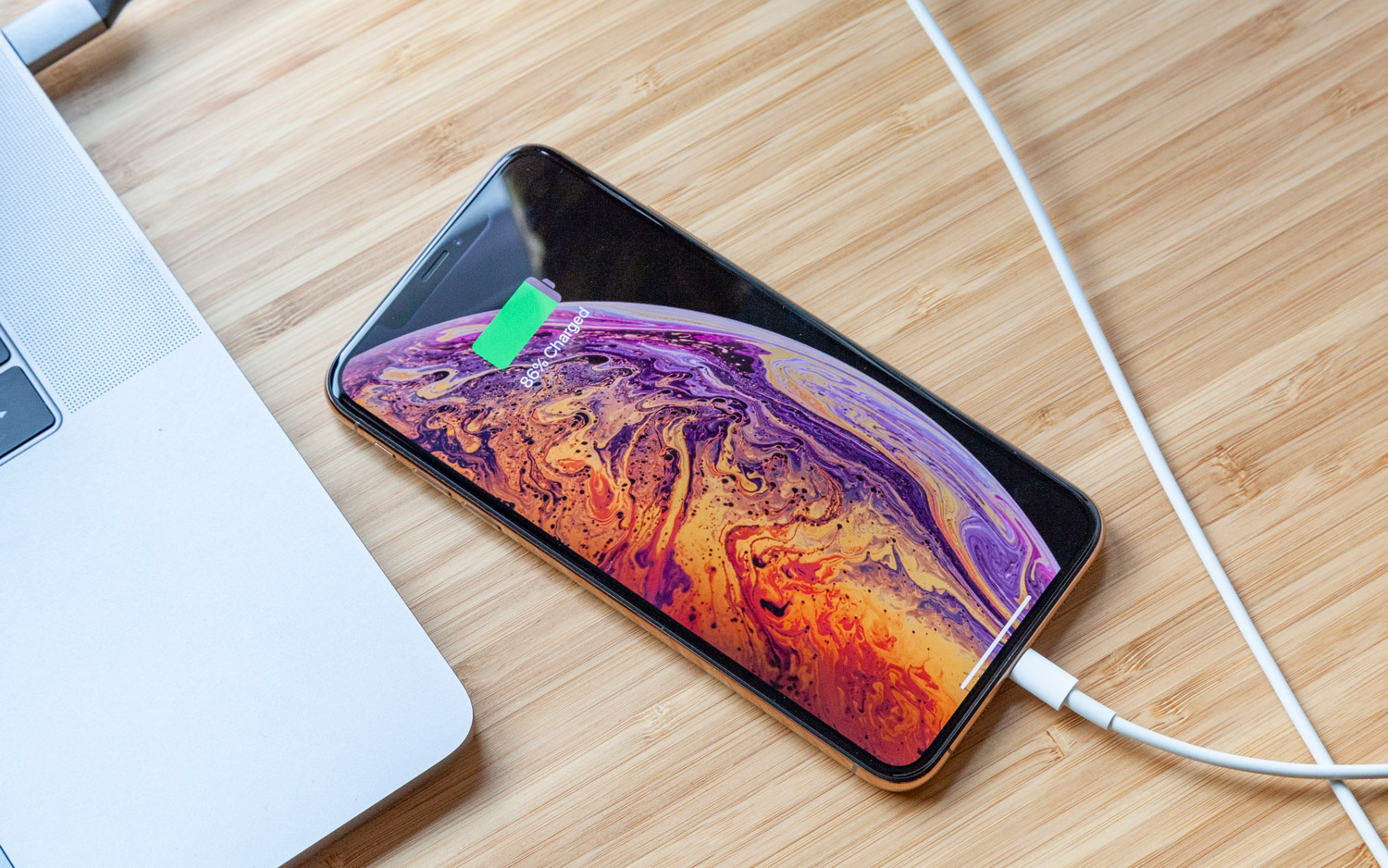
The Note 9 comes with a fast USB-C charger in the box. If you want that perk on the iPhone Xs Max, you’ll have to fork over even more dough for a 30-watt charger and USB-C to Lightning cable, which seems obscene for a $1,099 phone.
Some users are complaining that the iPhone XS and XS Max are not charging when the displays are turned off, an issue Apple will reportedly fix with the upcoming iOS 12.1 update.
Winner: Galaxy Note 9
Price and Value
Let’s talk numbers. The Note 9 looks like a better value than the iPhone Xs Max for two reasons: 1) The starting price for Samsung’s phone is $100 less at $999 (versus $1,099 for Apple’s); 2) You also get double the storage in the Note 9 at that starting price (128GB vs 64GB).
That price delta grows between the Note 9 and iPhone Xs Max to $200 as you go up to 512GB. Plus, only the Note 9 gives you expandable storage.
Winner: Galaxy Note 9
Overall Winner: iPhone XS Max
The iPhone XS Max is now the best big-screen phone you can buy, but it didn’t beat the Galaxy Note 9 by much in this face-off. They are both Editors' Choice winning handsets for a reason.
| Row 0 - Cell 0 | iPhone XS Max | Galaxy Note 9 |
| Design (10) | 9 | 8 |
| Display (15) | 15 | 14 |
| Performance (20) | 20 | 17 |
| Cameras (20) | 18 | 16 |
| Special Features (5) | 3 | 5 |
| Security (5) | 5 | 4 |
| Battery Life (15) | 12 | 14 |
| Price/Value (10) | 6 | 8 |
| Overall | 88 | 86 |
Apple’s flagship won the design and performance rounds, and its camera fared better in side-by-side photos comparisons. And while the Note 9 gives you more biometric security options, Face ID is simple and works best. The iPhone XS’ display edges out the Note 9’s panel slightly for higher brightness you can get on command.
The Galaxy Note 9 pulls ahead in some important categories, though. It offers longer battery life based on our testing and faster charging out of the box, and it gives you double the storage and microSD expansion for less money. And if you really care about productivity, the S Pen can really come in handy.
Overall, both the iPhone XS Max and Note 9 are superior phablets, but Apple’s handset barely squeaks out the victory.
Credit: Tom's Guide
Sign up to get the BEST of Tom's Guide direct to your inbox.
Get instant access to breaking news, the hottest reviews, great deals and helpful tips.
Mark Spoonauer is the global editor in chief of Tom's Guide and has covered technology for over 20 years. In addition to overseeing the direction of Tom's Guide, Mark specializes in covering all things mobile, having reviewed dozens of smartphones and other gadgets. He has spoken at key industry events and appears regularly on TV to discuss the latest trends, including Cheddar, Fox Business and other outlets. Mark was previously editor in chief of Laptop Mag, and his work has appeared in Wired, Popular Science and Inc. Follow him on Twitter at @mspoonauer.
-
darnel345 This has to be the most biased and Apple fanboy piece to date on this website. Why even bother attempting to be objective??Reply -
gabbyaquino Design and Display are both contestable. Note 9 immerses you with its super AMOLED screen without a notch! You can't concentrate on iPhone because of that notch! And for value - please. At 1000 USD I get all this plus 4000 mah battery, 128 GB memory expandable, true dual-sim capability, a fast charger - whuch you fanboy has to pay for! And did Apple give you a cool Galaxy skin in Fortnote? Hell no!Reply -
azag666thoth Bias mf you crapple lovers always pick apple even though in real world apple cant keep up and now they can't even get a signal worth a shit.Reply
I'm sure you guys get some kickback or free phones -
slandier I agree, this is totally biased. Putting the iPhone camera in front of the Galaxy Note is absolute BS. I wonder about the restReply -
Mark Spoonauer Reply
@darnel345 We conducted a thorough and objective face-off. Is there a particular round you believe the Note 9 should have won? Also see our more in-depth camera shootout.21351618 said:This has to be the most biased and Apple fanboy piece to date on this website. Why even bother attempting to be objective??
-
Mark Spoonauer Reply
@slandier What about the Note 9's camera is better to you? Have you tested both cameras side by side as we have? Would be great to see your results. Also, check out our more in-depth photo shoot-out between the two phones.21351791 said:I agree, this is totally biased. Putting the iPhone camera in front of the Galaxy Note is absolute BS. I wonder about the rest
-
Mark Spoonauer Reply
@azag666thoth We've reported on the signal issues some iPhone XS/Max owners have been having but we were not able to replicate it ourselves. However, in side by side tests the Note 9 did offer better LTE results than the iPhone XS. What about the Note 9 do you think is superior other than the rounds where it already wins in this face-off?21351652 said:Bias mf you crapple lovers always pick apple even though in real world apple cant keep up and now they can't even get a signal worth a shit.
I'm sure you guys get some kickback or free phones
-
Mark Spoonauer Reply
Hi @gabbyaquino. The notch is actually not distracting in everyday use. Also, it's worth noting that nearly every Android phone maker has adopted that design. We'll see what Samsung does with Galaxy S10.21351628 said:Design and Display are both contestable. Note 9 immerses you with its super AMOLED screen without a notch! You can't concentrate on iPhone because of that notch! And for value - please. At 1000 USD I get all this plus 4000 mah battery, 128 GB memory expandable, true dual-sim capability, a fast charger - whuch you fanboy has to pay for! And did Apple give you a cool Galaxy skin in Fortnote? Hell no!
I agree on value though and especially battery life, and the Note 9 wins those rounds.
-
jroesel I have a note 9 as work phone and Xs Max as my personal. This all boils down to why I switched from Droid and moved to Apple in the first place. Droid programs get bogged down way to easily, they are open to Malware and Spam. Performance wise, my 7+ was superior to the S9 even if on paper the 7+ was severely outclassed. If Samsung had a better OS I'd be all over it, but when I have a significant lag or crash when trying to switch between Google Maps and my email, something is wrong. ios is much more seamless and superior in this department, and it's why I have prefered iphone over the past few years.Reply
